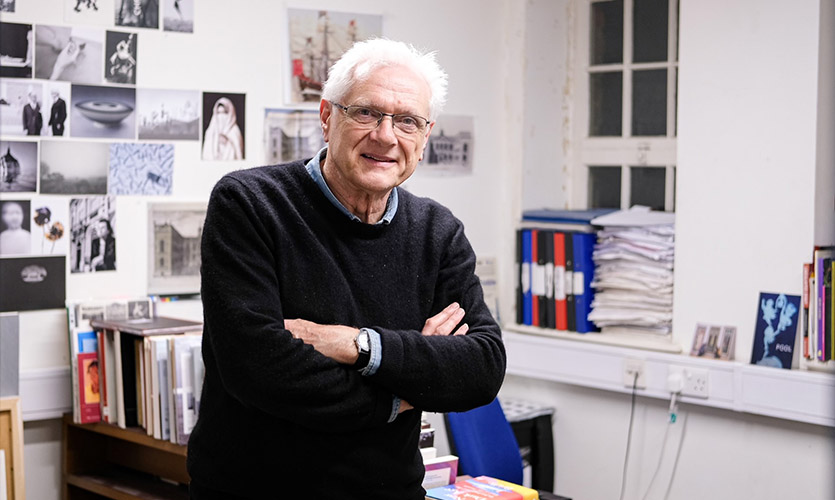Bryan Biggs

Bryan is the Director of Bluecoat, Liverpool’s contemporary Arts centre, a working home for artists, and a place where audiences can experience art in new ways. As a fine art graduate of the polytechnic, he never imagined he’d one day be running one of Liverpool’s oldest and most well-known galleries.
Bryan features in our ‘Humans of LJMU’ series in collaboration with the ‘Humans of Liverpool’ social media account, sharing the stories of the people who make our city, communities and university the vibrant, inclusive place it is in celebration of our bicentenary year.
In his interview he reflects on the history of the building (the oldest in Liverpool city centre) that houses the Bluecoat, and his own journey from art student to Art Director.
“My story with the Bluecoat started in 1975. I’d just graduated from Liverpool Polytechnic, now LJMU, with a degree in fine art. I was from the south of England, moving to a different city. I’d never been here before, but I’ve been here ever since.”
– Bryan Biggs

Bryan’s ‘Humans of LJMU’ interview
“In 1717 the Bluecoat started life as a charity school, looking after orphans and it had the same purpose for 200 years, before the artists moved in, in the 20th century.
“Then during the Second World War, the building was badly bombed, the Germans were aiming for the docks but a lot of bombs were dropped on this part of town.
“My story with the Bluecoat started in 1975. I’d just graduated from Liverpool Polytechnic, now LJMU, with a degree in fine art. I was from the south of England, moving to a different city. I’d never been here before, but I’ve been here ever since.
“I originally started as an admin assistant. My intention wasn’t to be involved in an Arts building for my whole career, it was just an opportunity that came up. As part of that job I worked in the gallery once a week. I was quite handy, so I’d help install the paintings and took a real interest in learning about each artist.
“Soon after, they offered me the job running the gallery. I thought how do I do that? But my girlfriend at the time convinced me to go for it, so I did. I learnt on the job how to do the finance, marketing, selecting artists. I was thrown in at the deep end.
“When I first got here there was an amazing cinema called Merseyside Film Institute. It was Britain’s first film club, established in the 1930’s. They went out of business, but FACT Liverpool moved in and started to run a bi-annual video festival. They kept growing taking over the whole of one wing until they built their own building. I was chair of FACT for a while so I’m proud to have been part of their development. By the early 2000’s the building was starting to feel really old. It had been done up after the war and had bits of patching over the years, but it needed a complete overhaul.
“The fires from the incendiary bomb dropped during the war spread and burnt away the roof of one building, and a full wing, which was never rebuilt fully. We had a wing missing, so we knew that was going to be the new Arts wing, where the gallery is now.
“After securing Capital of Culture funding and commissioning a Dutch architect to reimagine the building, we reopened in March 2008 as part of the renaissance of Liverpool.
“I then took the Bluecoat through its 300th year in 2017, which was amazing to be a part of. I did a lot of research and published a book on our history. That gave me time to reflect on my entire career here, the history of the building and the city as a whole.
“Not many institutions have such a rich cultural history, especially in Liverpool. It’s important to explore the trauma associated with the care system that still exists today and also to interrogate the legacy of the slave trade in the city and this buildings relationship with it. Taking a step back from day-to-day operations now as Director of Cultural legacies allows me to spend more of my time doing that.”
